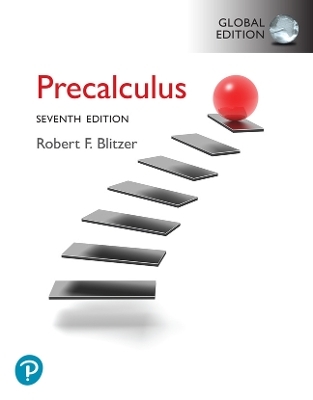
Understanding Biostatistics
John Wiley & Sons Inc (Hersteller)
978-1-119-99267-7 (ISBN)
- Keine Verlagsinformationen verfügbar
- Artikel merken
This book will be useful for biostatisticians with little mathematical background as well as those who want to understand the connections in biostatistics and mathematical issues.
Anders Kallen, Department of Biostatistics, AstraZeneca R&D, Sweden.
Preface. 1 Statistics and Medical Science. 1.1 Introduction. 1.2 On the Nature of Science. 1.3 How the Scientific Method uses Statistics. 1.4 Finding an Outcome Variable to Assess your Hypothesis. 1.5 How We Draw Medical Conclusions from Statistical Results. 1.6 A Few Words about Probabilities. 1.7 The Need for Honesty - the Multiplicity Issue. 1.8 Pre-Specification and p-value History. 1.9 Adaptive Designs - Controlling the Risks in an Experiment. 1.10 The Elusive Concept of Probability. 1.11 Comments and Further Reading. References. 2 Observational Studies and the Need for Clinical Trials. 2.1 Introduction. 2.2 Investigations of Medical Interventions and Risk Factors. 2.3 Observational Studies and Confounders. 2.4 The Experimental Study. 2.5 Population Risks and Individual Risks. 2.6 Confounders, Simpson's Paradox and Stratification. 2.7 About Incidence and Prevalence in Epidemiology. 2.8 Comments and Further Reading. References. 3 Study Design and the Bias Issue. 3.1 Introduction. 3.2 What Bias is All About. 3.3 The Need for a Representative Sample - About Selection Bias. 3.4 Group Comparability and Randomization. 3.5 Information Bias in a Cohort Study. 3.6 The Study, or Placebo, Effect. 3.7 The Curse of Missing Values. 3.8 Approaches to Data Analysis - Avoiding Self-inflicted Bias. 3.9 On Meta-analysis and Publication Bias. 3.10 Comments and Further Reading. References. 4 The Anatomy of Statistical Tests. 4.1 Introduction. 4.2 Statistical Tests, Medical Diagnosis and Roman Law. 4.3 The Risks with Medical Diagnosis. 4.3.1 Medical Diagnosis based on a Single Test. 4.3.2 Bayes' Theorem and the Use and Misuse of Screening Tests. 4.4 The Law: a Non-Quantitative Analogue. 4.5 Risks in Statistical Testing. 4.5.1 Does Tonsillectomy Increase the Risk for Hodgkin's Lymphoma? 4.5.2 General Discussion about Statistical Tests. 4.6 Making Statements about a Binomial Parameter. 4.6.1 The Frequentist Approach. 4.6.2 The Bayesian Approach. 4.7 The Bell-Shaped Error Distribution. 4.8 Comments and Further Reading. References. 4.A Appendix: The Evolution of the Central Limit Theorem. 5 Learning About Parameters, and Some Notes on Planning. 5.1 Introduction. 5.2 Test Statistics Described by Parameters. 5.3 How We Describe Our Knowledge about a Parameter from an Experiment. 5.4 Statistical Analysis of Two Proportions. 5.4.1 Some ways to compare two proportions. 5.4.2 Analysis of the group difference. 5.5 Adjusting for Confounders in the Analysis. 5.6 The Power Curve of an Experiment. 5.7 Some Confusing Aspects of Power Calculations. 5.8 Comments and Further Reading. References. 5.A Some Technical Comments. 6 Empirical Distribution Functions. 6.1 Introduction. 6.2 How to Describe the Distribution of a Sample. 6.3 Describing the Sample - Descriptive Statistics. 6.4 Population Distribution Parameters. 6.5 Confidence in the CDF and its Parameters. 6.6 Analysis of Paired Data. 6.7 Bootstrapping. 6.8 Meta-Analysis and Heterogeneity. 6.9 Comments and Further Reading. References. 6.A Appendix: Some Technical Comments. 7 Correlation and Regression in Bivariate Distributions 7.1 Introduction. 7.2 Bivariate Distributions and Correlation. 7.3 About Baseline Corrections and Other Covariates. 7.4 Bivariate Gaussian Distributions. 7.5 Regression to the Mean. 7.6 Statistical Analysis of Bivariate Gaussian Data. 7.7 Simultaneous Analysis of Two Binomial Proportions. 7.8 Comments and Further Reading. References. 7.A Appendix: Some Technical Comments. 8 How to Compare the Outcome in Two Groups. 8.1 Introduction. 8.2 Simple Models that Compare Two Distributions. 8.3 Comparison Done the Horizontal Way. 8.4 Analysis Done the Vertical Way. 8.5 Some Ways to Compute p-values. 8.6 The Discrete Wilcoxon Test. 8.7 The Two-Period Crossover Trial. 8.8 Multivariate Analysis and Analysis of Covariance. 8.9 Comments and Further Reading. References. 8.A Appendix: About U-statistics. 9 Least Squares, Linear Models and Beyond. 9.1 Introduction. 9.2 The Purpose of Mathematical Models. 9.3 Different Ways To Do Least Squares. 9.4 Logistic Regression, with Variations. 9.5 The Two-step Modeling Approach. 9.6 The Effect of Missing Covariates. 9.7 The Exponential Family of Distributions. 9.8 Generalized Linear Models. 9.9 Comments and Further Reading. References. 10 Analysis of Dose response. 10.1 Introduction. 10.2 Dose-Response Relationship. 10.3 Relative Dose Potency and Therapeutic Ratio. 10.4 Subject-Specific and Population Averaged Dose-response. 10.5 Estimation of the Population Averaged Dose-response Relationship. 10.6 Estimating Subject-Specific Dose-responses. 10.7 Comments and Further Reading. References. 11 Hazards and Censored Data. 11.1 Introduction. 11.2 Censored observations: incomplete knowledge. 11.3 Hazard Models from a Population Perspective. 11.4 The Impact of Competing Risks. 11.5 Heterogeneity in Survival Analysis. 11.6 Recurrent Events and Frailty. 11.7 The Principles Behind the Analysis of Censored Data. 11.8 The Kaplan-Meier Estimator of the CDF. 11.9 Comments and Further Reading. References. 11.A Appendix: On the Large-sample Approximations of Counting Processes. 12 From the Log-rank Test to the Cox Proportional Hazards Model. 12.1 Introduction. 12.2 Comparing Hazards Between Two Groups. 12.3 Nonparametric Tests for Hazards. 12.4 Parameter Estimation in Hazards Models. 12.5 The Accelerated Failure Time Model. 12.6 The Cox Proportional Hazards Model. 12.7 On Omitted Covariates and Stratification in the Log-rank Test. 12.8 Comments and Further Reading. References. 12.A Appendix: Comments on Interval-Censored Data. 13 Remarks on Some Estimation Methods. 13.1 Introduction. 13.2 Estimating Equations and the Robust Variance Estimate. 13.3 From Maximum Likelihood Theory to generalized estimating equations. 13.4 The Analysis of Recurrent Events. 13.5 Defining and Estimating Mixed Effects Models. 13.6 Comments and Further Reading. References. 13.A Appendix: Formulas for First-order Bias. Index.
| Verlagsort | New York |
|---|---|
| Sprache | englisch |
| Maße | 178 x 253 mm |
| Gewicht | 800 g |
| Themenwelt | Mathematik / Informatik ► Mathematik |
| Naturwissenschaften ► Biologie | |
| ISBN-10 | 1-119-99267-2 / 1119992672 |
| ISBN-13 | 978-1-119-99267-7 / 9781119992677 |
| Zustand | Neuware |
| Haben Sie eine Frage zum Produkt? |
aus dem Bereich
